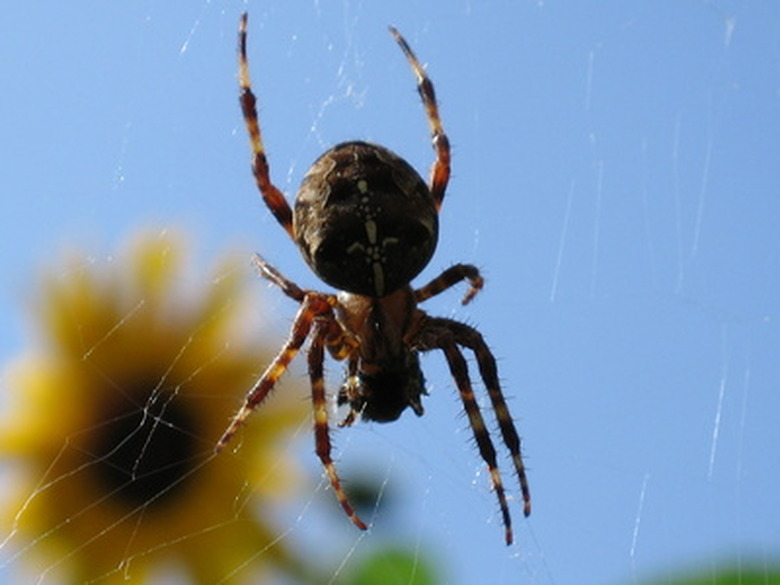Life Cycle Of Mud Daubers
Mud daubers are a type of solitary wasp common in North America. They generally grow to be ¾ to 1 inch long and can be dull black, iridescent black, or black with yellow markings. They can be identified by their long, narrow waist. Mud daubers are generally non-aggressive insects, but the distinctive mud dauber nests can be a nuisance.
Nest Building
Nest Building
Female mud daubers build nests out of mud and clay. Mud dauber nests are composed of small, round pots or long, parallel tubes, giving the wasps their other common name: organ pipe wasps. Inside each "pipe" are several cells, partitioned off with mud. Every cell includes several paralyzed spiders and a single egg. The mother does not stay to care for her young, and abandons the nest shortly after sealing it.
Eggs and Larvae
Eggs and Larvae
Mud daubers hatch shortly after the egg is laid. Mud dauber babies begin to eat the paralyzed spiders in their cells. According to Time Magazine, mud dauber larvae have a closed digestive system. They cannot excrete waste until they have finished their stored food. Once the baby mud dauber consumes all its spiders, it develops an anus, excretes a waste sac and seals off the part of the cell where the waste is stored. The larvae then overwinter in the remaining chamber.
Pupation Stage
Pupation Stage
When the mud dauber larva is fully grown–at about ¾ of an inch long–it creates a pupa. This special case protects it during the process of changing into an adult. The adult mud dauber emerges in late spring or early in summer, eating its way out of the mud cell. It releases stored waste into the cell, then flies off to feed on flowers and look for a mate.
Mud Dauber Parasitism
Mud Dauber Parasitism
One mud dauber species–the blue mud dauber–does not build its own nest. Instead, it takes over the nests of other mud daubers, such as the pipe organ mud dauber and the black and yellow mud dauber. The blue mud dauber moistens the clay cell with water, pulls out the egg and the spiders procured by the nest builder, and lays it own egg inside. Then she provisions the cell with her own spiders, usually black widows, and seals the chamber again.
Other Considerations
Other Considerations
Mud daubers are capable of stinging, but rarely act aggressively towards humans. They can actually benefit humans by reducing the local population of dangerous spiders. Homeowners should consider leaving mud daubers and their nests alone unless they pose a specific problem.
Cite This Article
MLA
Palmer, G.D.. "Life Cycle Of Mud Daubers" sciencing.com, https://www.sciencing.com/life-cycle-mud-daubers-6609044/. 22 November 2019.
APA
Palmer, G.D.. (2019, November 22). Life Cycle Of Mud Daubers. sciencing.com. Retrieved from https://www.sciencing.com/life-cycle-mud-daubers-6609044/
Chicago
Palmer, G.D.. Life Cycle Of Mud Daubers last modified March 24, 2022. https://www.sciencing.com/life-cycle-mud-daubers-6609044/
